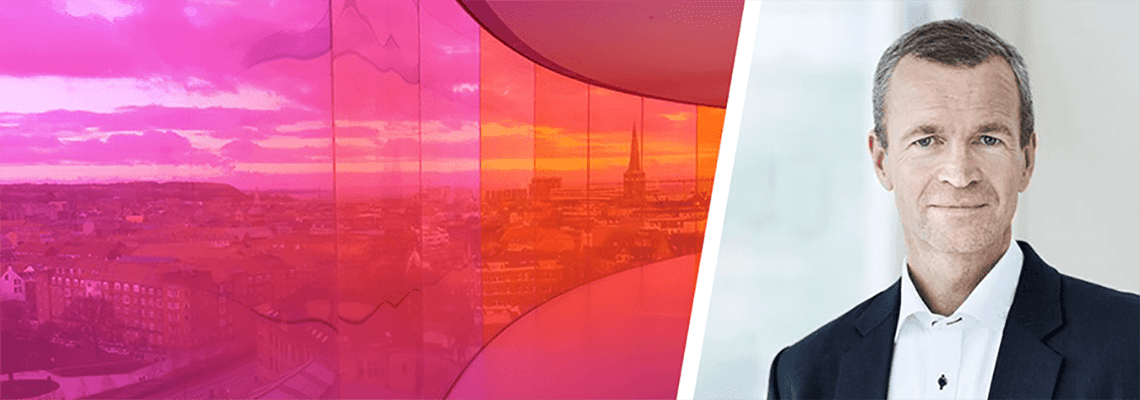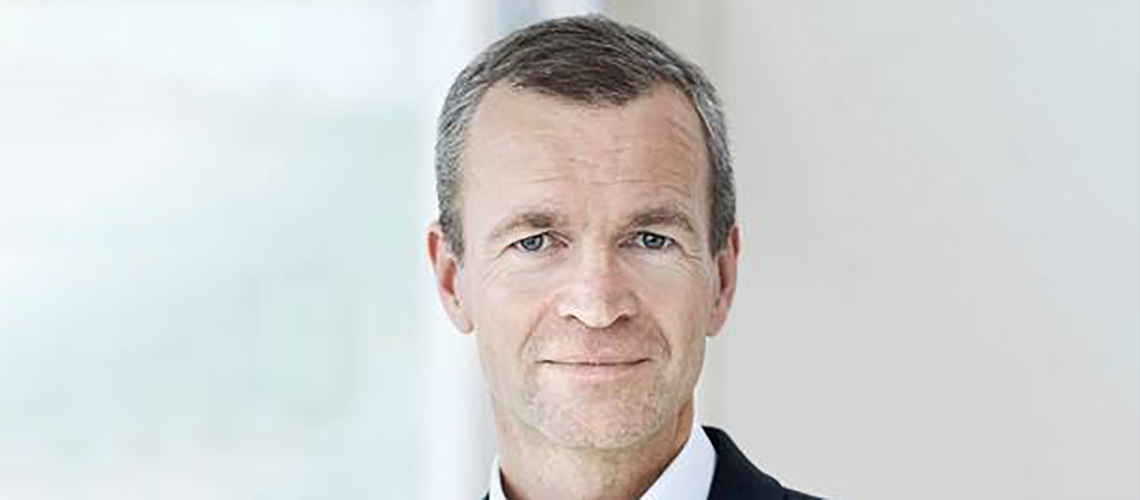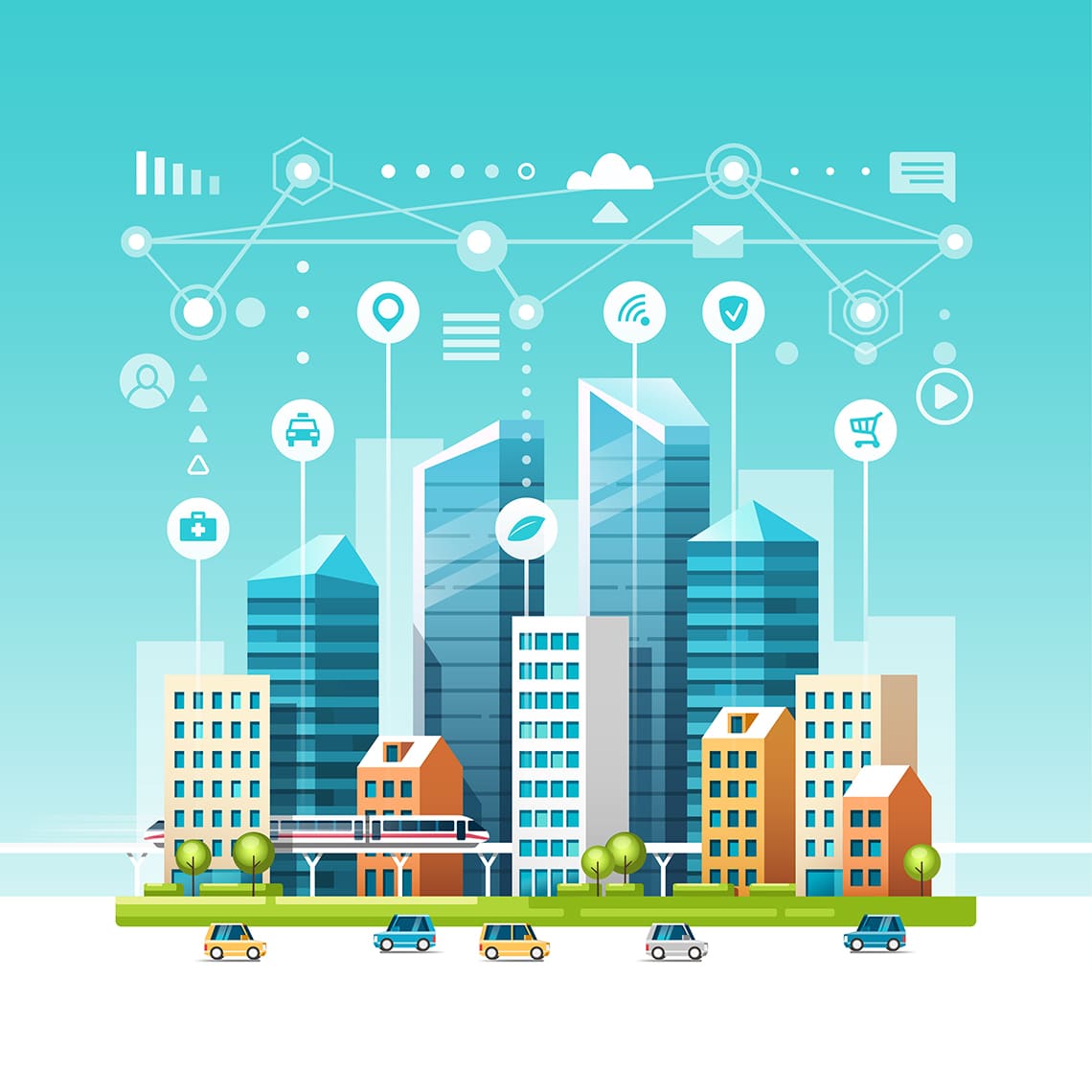
Danish water utility Aarhus Vand has been beating the data drum for many years. Here the chief digital information officer explains why a ‘digital first’ strategy is so important.
For a man with the word ‘digital’ in his job title, Jesper Kjelds is relatively relaxed about being unconnected.
“I don’t have all the new fancy gadgets to control my fridge or speak to google to control a smart home”, he admits.
Speaking from a summerhouse on the West Coast of Denmark while on vacation, Kjelds sets out strong ambitions, particularly when it comes to positioning his water utility – Aarhus Vand - in the crowded Danish utility landscape.
The chief digital information officer believes the Aarhus region will act as a ‘digital lighthouse’ not only visibly across Denmark, but internationally.
While digitalisation means very different things to different utilities, for Aarhus Vand, the utility has been beating the data drum for many years.
Over 10 years ago, the water company started investigating building systems to improve wastewater collection and treatment through on-line monitoring, generating data before Big Data became fashionable.
Fast forward a decade and the team is now looking to integrate Supervisory Control and Data Acquisition (SCADA) with other data sets to automate, streamline and help control its water supply and distribution operations “on-line control and automation from source to tap”.
“We will push digitalisation to the limit, there’s no doubt about that,” says Kjelds “We’re going to make mistakes, but in the end we will prevail because we are good at learning from the experience. We’re not setting out to fail, of course, but we have no problem in taking existing technologies, taking them to the limit and pushing boundaries.”
Aarhus Vand has defined a series of business frameworks and for each of these, developed a ‘multi-digital roadmap’. These frameworks include customer service; intelligent water systems; project planning and construction and a digital foundation – building blocks/LEGO approach.
The digital push is also backed locally by the Aarhus Municipality Mayor to strengthen Aarhus’s appeal as a business hub. Even the Danish government is putting its weight behind it.
The previous ‘Vandvision 2025’ document sets out ambitions for the country’s water sector, stating goals to deliver “intelligent, sustainable and effective water solutions”.

Denmark’s second largest water utility is one of 87 in the country and provides drinking water to 260,000 people and treats wastewater from 340,000. In addition, there are nearly 3,000 private water works in Denmark.
In the next five to 10 years, the chief digital and information officer believes the currently fragmented utility market will start to consolidate and merge into larger utilities.
“Consolidation in this sector will happen, and it will either be a case of consolidating with someone else or being consolidated yourself,” he says. “It doesn’t always mean being bigger drives efficiency, but being a larger entity means you have more muscle to collaborate, be innovative and try new projects.”
The reasons for the utility to continuously strive to improve become clear when there is a threat of potential consolidation hanging in the air. After all, is it better to be the hunter or the hunted?
By leading the way and sticking your head above the proverbial parapet, you automatically reserve yourself a seat in the first camp.
Interestingly, the role of chief digital information officer (CDIO) was new to Aarhus Vand when Kjelds took up the mantle in the summer of 2017. The utility decided to hire a person to connect IT and engineering through data and business insight, thus to lead and drive the digital transformation.
After 21 years working for DHI (including nine years building and growing DHI’s US-based office), Kjelds had a two-year stint at pump company, Grundfos and most recently the smart metering company, Kamstrup.
While with DHI he helped to set up the water technology alliance in Chicago with Aarhus Vand’s current chief operating and strategy officer, Claus Homann. Kjelds then moved over to the utility segment as the topic of digitalisation climbed the agenda, coupled with the need for someone to join all the dots.
With a masters degree in Engineering, Environment, Mathematical Modelling, the chief digital information officer now bridges the gap between the ICT and engineering teams; a position few could do without his background covering modelling and software, pump equipment and smart meters.
“It involves being able to speak ICT language to one team and then translating this to technical teams of mechanical engineers – I understand both sides of the business,” he explains.
As part of its digital strategy, Aarhus Vand has created a cross-functional team, including IT, GIS, project management – a diverse group of IT-minded people who know the business. They then hired a senior IT executive to lead this group.
“The task is to chart Aarhus Vand’s new digital direction,” he adds. “We see this development echoed elsewhere across the country. Utilities are starting to take a more strategic direction, rather than looking at standalone IT projects.”
Commenting on the skills shortage in water and the potential for digitalisation and AI to attract a new pool of talent, Kjelds doesn’t pull any punches when it comes to addressing historic problems.
“We can have the best solutions available in the market, but if there’s one thing that needs to change, it’s the mindset of many,” he points out. “There’s a new generation of people coming into utilities. It’s not just middle-aged, white guys sitting and waiting for retirement, not wanting to change anything.”

Using his experience from the water alliance in the US, Kjelds has also been involved in setting up a National Water Cluster. This involves the country’s four largest utilities: Aarhus Vand, Hofor, Biofos Denmark and VCS. Solution providers such as Grundfos, Danfoss, AVK and Kamstrup are also involved.
The foundation of the cluster is centred around digitalisation, data and digital asset management to help develop projects within water, wastewater and resource recovery nationally across Denmark. The idea is for the cluster to include multiple working groups and projects, initiated underneath the National Water Cluster.
“It’s open to everyone,” adds Kjelds. “There is an annual entrance fee, which would be minimal, but it gives you access to the different activities.”
Answering the question of how the cluster will dovetail with the existing AquaGlobe initiative led by the Skanderborg utility, he explains: “The cluster has the ambition to collaborate with all water innovation hubs, groupings and initiatives in Denmark - we need to pool our resources and efforts to maximise synergies and impact nationally as well as internationally.”
Another ambition is for the cluster to draw EU finance and then combine external and internal finance to help promote digital projects.
Looking ahead, the chief digital information officer predicts that the very nature of water treatment, and its perceived image, will change.
He envisages the entire utility’s network of treatment plants being climate neutral. “Perhaps in the not too distant future energy will be a moot point,” he enthuses.
Proteins, nutrients, chemicals, medicine and fertilisers could all be recovered from resource reclamation plants, not wastewater treatment facilities.
Plans are already underway on this: the utility’s recently tendered ReWater development is being designed from the ground up as the world’s most efficient treatment plant and follows in the footsteps of the famed energy-positive, Marselisborg plant. Today the latter stands out like a lighthouse with respect to automation, minimal energy consumption, energy generation and recovery of resources.
Kjelds is also adamant about the change needed in water finance, necessary to make these ambitions happen.
“What needs to change is utilities charging rates that will keep them cost neutral, so people will pay the full price for water production, not hidden costs in taxes,” he adds. “A paradigm shift is needed, so utilities are not always under-funded and don’t have the funds to maintain infrastructure and try out new technologies.”
Even while on vacation, Kjelds’s dogged determination, passion and ambition never falter. Some global execs have a strong vision for the future of water, often throwing in words like ‘AI’, ‘Blockchain’ and ‘climate neutrality’. Unless they can be backed up with evidence, or action, they’re mere words, empty words at that.
Yet, it’s clear Kjelds and Aarhus Vand are not only talking the talk but walking the walk when it comes to becoming one of the most progressive water utilities on the planet. Watch this space.
Jesper Kjelds is one of the keynote speakers at the Innovation Forum, taking place on November 4.